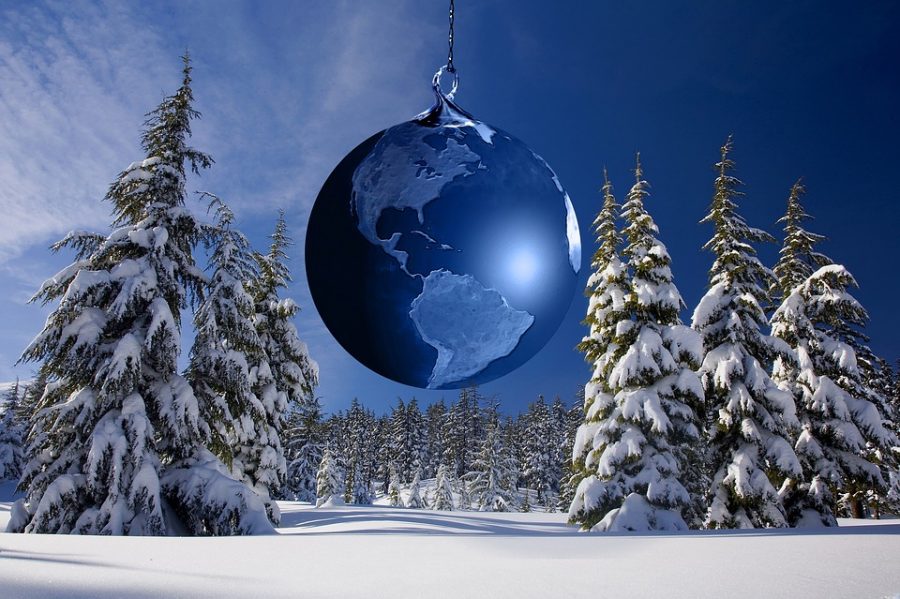Holidays Around the World
December 7, 2018
We’ve finally made it to the most wonderful time of the year; the holiday season! Unless you are the Grinch or Ebenezer Scrooge, people everywhere love this time of year. But not everyone celebrates it the same way. Students at Pentucket commonly celebrate Christmas and Hanukkah, but there are many more traditions being celebrated around the world.
Kwanzaa is an African American and Pan-African holiday celebrated from December 26th to January 1st. It is not a religious holiday, unlike many others during this time of year, but rather a way to honor ancient African culture. It comes from the traditional harvest festivals that have been celebrated in Africa as the year draws to a close. It comes from the Swahili phrase, “matunda ya kwanza,” which translates to “first fruits of the harvest.”
During Kwanzaa, each day of the week recognizes a specific principle that has been believed to strengthen African families and communities. The principles are umoja (unity), kujichagulia (self-determination), ujima (collective work and responsibility), ujamaa (cooperative economics), nia (a sense of purpose), kuumba (creativity), and imani (faith).
The biggest celebration is a feast called karamu that is celebrated on Dec. 31. Families gather together and eat traditional dishes that include sesame seeds, peanuts, sweet potatoes, collard greens, and spicy sauces. The symbolic colors of the holiday are black, red, and green. Black represents the color of the people, red represents the blood they shed while fighting for their freedom, and green represents the African land.
In Mexico, the festival Las Posadas takes place during Dec. 16-24. It remembers Mary and Joseph’s journey from Nazareth to Bethlehem to find a safe place to stay for the night. The festival is celebrated every night with a procession in which children dressed in robes and adults playing music will stop at homes, referred to as “posadas,” to ask if they will provide shelter for Mary and Joseph. It is treated like Christmas caroling; reading scripture passages and singing at every home to spread the festive spirit. On the final day of the celebration, people gather together inside homes and celebrate with music, food, and a piñata.
St. Lucia’s Day is a winter holiday in Swedish speaking countries such as Sweden, Norway, and parts of Finland, on Dec. 13. It honors St. Lucia for her religious sacrifice when the Romans killed her in 304 CE. Towns elect a woman to be St. Lucia and lead the procession. Young girls wearing lighted wreaths on their heads and white dresses, along with boys in white pajamas follow her through the procession. The purpose of St. Lucia’s Day is to spread light and hope in the dark times. At home, the oldest daughter of the family will dress in white and serve coffee and pastries. One of the most famous pastries is saffron bread, which is an s-shaped bun similar to teacakes.
People of Chinese descent around the world celebrate Chinese New Year, also known as the Spring Festival, is celebrated. The date changes every year because it depends on the lunar month, so in 2019 it will take place from Feb. 5 to Feb. 19. When it was first created, its purpose was to honor the gods and their ancestors for blessing them with food. Fireworks are set off at midnight on New Year’s Eve to ward off the mythical monster, Nian.
Stores in China typically close for the first five days of Chinese New Year because those days are meant to be spent with family. Gifts are exchanged during this holiday, but children also receive money in red envelopes for good luck in the new year. Speaking of the color, houses will be decorated in all red, and people will buy new red clothes for good luck.
Each year is also represented by a zodiac animal, which represents the positive traits of the people born in their year. This coming new year, 2019, will be the year of the pig. The last day of Chinese New Year is celebrated with the Lantern Festival, in which people hang lanterns in the street during the first lunar moon of the new year.
Diwali is a Hindu festival celebrated in India. Indians light clay lamps and put them outside of their houses to represent protection from spiritual darkness and the triumph of good over evil. It is celebrated over the course of five days. The first day is usually spent cleaning the house and purchasing gold or kitchenware. They then decorate their homes on the second day with clay lamps, and make rangoli designs on the floor with sand and powder. Families celebrate Lakshmi puja on the third day with feasts and fireworks as a prayer to Goddess Lakshmi. Presents are exchanged on the fourth day to mark the new year. The fifth day is dedicated to celebrating sisters, in which brothers and sisters bond.
On Jan. 6, also known as the 12th day of Christmas, the Latin Christian holiday of Three Kings Day, or El Día De Los Reyes, is celebrated. It is in remembrance of the three Wise Men who followed the North Star for twelve days to present baby Jesus with the gifts of gold, frankincense, and myrrh. The traditional food of Three Kings Day is Rosca De Reyes, which is sweet bread in a circular ring. It is served for a mile throughout Zocalo Square in Mexico City to more than 200,000 people to celebrate the holiday. Like leaving milk and cookies out for Santa, families put out hay, grass, and water for the Three Kings’ camels. There is also often a family dinner to celebrate the holiday, in which kids will make and wear paper crowns to honor the kings.
Happy holidays everyone! I hope you all enjoy this cheerful season, regardless of how you celebrate.











